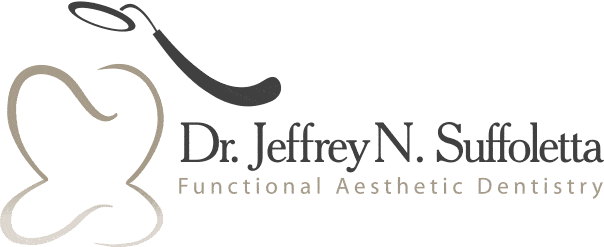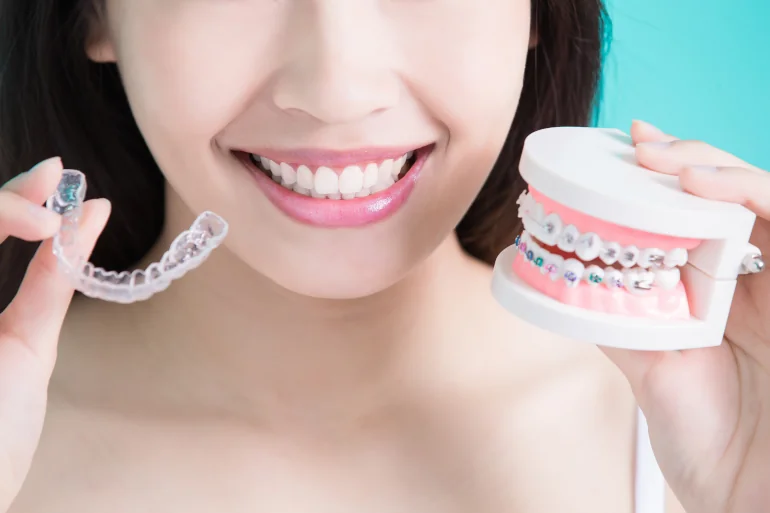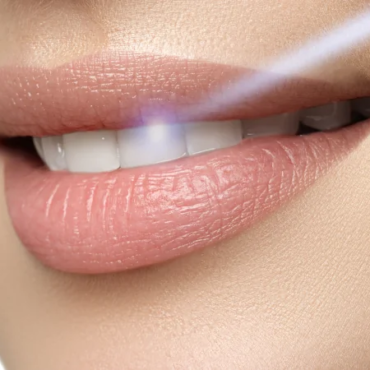Exploring Ten Key Innovations Transforming Orthodontic Treatment
Advancements in Technology
Orthodontics has witnessed remarkable advancements in technology that supports smile enhancement efforts. Thus, propelling the field toward more efficient and precise treatment modalities. With the advent of 3D printing, computer-aided design (CAD), and computer-aided manufacturing (CAM), orthodontists can now design and fabricate braces and aligners with unparalleled accuracy. These technologies enable customized treatment plans tailored to each patient’s unique dental anatomy, consequently resulting in improved treatment outcomes and patient satisfaction.
- Intraoral scanners and digital impressions have revolutionized the process of obtaining accurate dental models. Thereby, eliminating the need for messy traditional impressions.
- CAD/CAM technology allows for the fabrication of custom orthodontic appliances with precise fit and optimal functionality, reducing treatment times and enhancing patient comfort.
Invisible Aligners
The rise of invisible aligners, such as Invisalign, has transformed the orthodontic landscape. Thus, offering patients a discreet and convenient alternative to traditional braces. These clear, removable aligners are custom-made using advanced digital imaging technology. Thereby, allowing for precise tooth movement without the visibility and discomfort associated with metal braces. Invisible aligners have become increasingly popular among both adults and teenagers seeking orthodontic treatment.
- Clear aligners are virtually invisible, allowing patients to undergo orthodontic treatment without feeling self-conscious about their appearance.
- The removable nature of clear aligners enables patients to maintain good oral hygiene by easily brushing and flossing their teeth, reducing the risk of tooth decay and gum disease.
RELATED ARTICLE: Dental Digital Impressions, Revolutionizing the Dental Experience
Accelerated Orthodontics
Accelerated orthodontics techniques have emerged as a game-changer in the field. In addition, it offers patients the opportunity to shorten their treatment duration significantly. High-frequency vibration devices and micro-osteoperforations stimulate bone remodeling and accelerate tooth movement, allowing for faster and more efficient orthodontic treatment. These techniques are particularly beneficial for adult patients and individuals with busy lifestyles who desire expedited results.
- High-frequency vibration devices, such as AcceleDent, can reduce orthodontic treatment time by up to 50% by enhancing the biological response to tooth movement.
- Micro-osteoperforations create tiny perforations in the bone surrounding the teeth, stimulating an inflammatory response that accelerates tooth movement and facilitates faster orthodontic correction.
Smart Braces and Aligners
The integration of smart technology into braces and aligners represents a significant advancement in orthodontic treatment. Smart braces and aligners incorporate sensors and tracking devices to monitor treatment progress in real time, providing valuable feedback to both patients and orthodontists. These devices enable orthodontists to track tooth movement, assess treatment compliance, and make adjustments as needed, resulting in more personalized and efficient smile enhancement treatment outcomes.
- Smart braces and aligners allow patients to track their treatment progress using smartphone apps, empowering them to take an active role in their orthodontic care.
- Orthodontists can remotely monitor patients’ treatment progress and intervene promptly if any issues arise, thus improving communication and continuity of care.
RELATED ARTICLE: In-Office Invisalign VS at-Home Clear Aligners
Customization and Personalization
Orthodontic treatment is becoming increasingly tailored to each patient’s individual needs and preferences through customization and personalization. Advanced digital scanning and modeling technologies allow orthodontists to create custom-designed braces and aligners that fit precisely and deliver optimal tooth movement. Additionally, data-driven algorithms are employed to optimize treatment planning. Thus, ensuring that each patient receives a personalized smile enhancement treatment plan tailored to their specific orthodontic goals.
- Custom-designed braces and aligners provide a comfortable and precise fit, minimizing discomfort and irritation during treatment.
- Data-driven treatment planning algorithms analyze a multitude of factors, including dental anatomy, occlusal relationships, and treatment goals, to devise the most effective and efficient treatment plan for each patient.
Remote Monitoring
Orthodontic treatment has been revolutionized by remote monitoring technologies, which enable orthodontists to track patients’ progress remotely. Through the use of digital imaging and smartphone apps, patients can capture images of their teeth and submit them to their orthodontist for review. This allows for more frequent monitoring of treatment progress and facilitates timely adjustments, leading to more efficient and effective orthodontic care.
- Remote monitoring technologies offer greater convenience for patients, reducing the need for frequent in-person appointments and allowing for more flexible scheduling.
- By enabling orthodontists to monitor patients’ progress remotely, these technologies enhance access to care, particularly for patients in rural or underserved areas who may have limited access to orthodontic specialists.
RELATED ARTICLE: The History and Evolution of Orthodontics
Biocompatible Materials
Sustainability and biocompatibility become increasingly important considerations in orthodontics. As a result, researchers are exploring alternative materials that are both environmentally friendly and safe for patients. Bioplastics and biodegradable polymers are being investigated as potential alternatives to traditional orthodontic materials. Consequently, offering similar performance characteristics while reducing environmental impact. Thus, these materials have the potential to revolutionize orthodontic treatment by providing patients with more eco-friendly and biocompatible options.
- Biodegradable orthodontic materials offer a sustainable alternative to traditional materials, reducing the environmental footprint of orthodontic treatment.
- Biocompatible materials are less likely to cause adverse reactions or allergic responses in patients, ensuring a safer and more comfortable treatment experience.
Orthodontics for All Ages
Orthodontic smile enhancement treatments are no longer limited to adolescents. Thus, as an increasing number of adults are seeking orthodontic care to improve both the function and aesthetics of their smiles. Advances in orthodontic technology, such as clear aligners and lingual braces, have made treatment more discreet and socially acceptable for adults. In addition, orthodontic treatment can address not only cosmetic concerns but also functional issues. Such examples are bite misalignment and jaw pain, making it beneficial for patients of all ages.
- Clear aligners and lingual braces offer adults a more discreet alternative to traditional metal braces. It allows them to undergo treatment without feeling self-conscious about their appearance.
- Orthodontic treatment can improve oral health and function in adults by correcting bite alignment issues. As a result, it helps reduce the risk of tooth decay, gum disease, and temporomandibular joint (TMJ) disorders.
RELATED ARTICLE: How to Properly Care for Your Invisalign Aligners
Interdisciplinary Collaboration
Orthodontic treatment often requires collaboration with other dental specialists, such as oral surgeons, periodontists, and prosthodontists, to achieve optimal results. Interdisciplinary collaboration allows for a comprehensive approach to patient care. As a result, it will address not only orthodontic concerns but also underlying dental and skeletal issues. This teamwork ensures that patients receive the most effective and coordinated treatment possible, leading to improved outcomes and patient satisfaction.
- Collaborating with other dental specialists allows orthodontists to address complex cases more effectively. They can combine their expertise from multiple disciplines to develop comprehensive treatment plans.
- Interdisciplinary collaboration fosters communication and coordination among healthcare providers. Thus, it helps ensure that patients receive seamless and integrated care throughout their treatment journey.
Patient Education and Empowerment
With the proliferation of information available online, patients are becoming more proactive in researching their treatment options and advocating for their own oral health. Orthodontists are embracing this trend by providing patients with educational resources and involving them in the decision-making process. Accordingly, empowered patients are more likely to adhere to smile enhancement treatment plans and achieve successful outcomes, leading to improved satisfaction and better long-term oral health.
- Providing patients with educational resources empowers them to make informed decisions about their orthodontic treatment, thereby leading to greater satisfaction and treatment adherence.
- Involving patients in the decision-making process fosters a sense of ownership and accountability. Thus, motivating them to actively participate in their treatment and take responsibility for their oral health.



